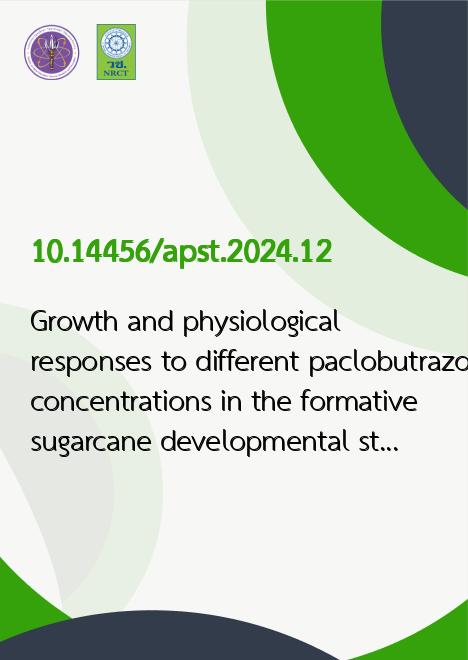
|
Growth and physiological responses to different paclobutrazol concentrations in the formative sugarcane developmental stage |
|---|---|
| รหัสดีโอไอ | |
| Creator | Nakorn Jongrungklang |
| Title | Growth and physiological responses to different paclobutrazol concentrations in the formative sugarcane developmental stage |
| Contributor | Sarinthorn Thongkam, Patcharin Songsri |
| Publisher | Asia-Pacific Journal of Science and Technology |
| Publication Year | 2567 |
| Journal Title | Asia-Pacific Journal of Science and Technology |
| Journal Vol. | 29 |
| Journal No. | 1 |
| Page no. | 11 |
| Keyword | Plant height, Biomass allocation, Chlorophyll content, Root traits, Plant growth retardant |
| URL Website | https://so01.tci-thaijo.org/index.php/APST |
| Website title | https://so01.tci-thaijo.org/index.php/APST/article/view/263543 |
| ISSN | 2539-6293 |
| Abstract | Paclobutrazol (PBZ) is a plant growth retardant that inhibits gibberellin synthesis. PBZ is probably used to resist drought through root growth promotion and inhibiting aboveground growth. However, the growth and physiology of early-stage sugarcane with PBZ need to be established. The objective of this study was to determine the responses of growth and physiology to the formative sugarcane developmental stage with different PBZ concentrations (0, 50, 100, 150, 200, and 250 mg/L). PBZ application affected plant height, tiller number, chlorophyll content, root characteristics, and biomass. This compound decreased plant height, whereas tiller number, chlorophyll content, root dry weight, and biomass increased. A PBZ concentration of 100 mg/L was identified as an appropriate concentration in formative sugarcane; this concentration retarded sugarcane height until 135 days after planting (DAP) but promoted drought resistance traits, namely SCMR and root dry weight, and improved final biomass and yield components, such as tiller number. The responses of drought resistance traits to varying PBZ concentrations form the basis for further drought resistance investigations in cultural practice. |